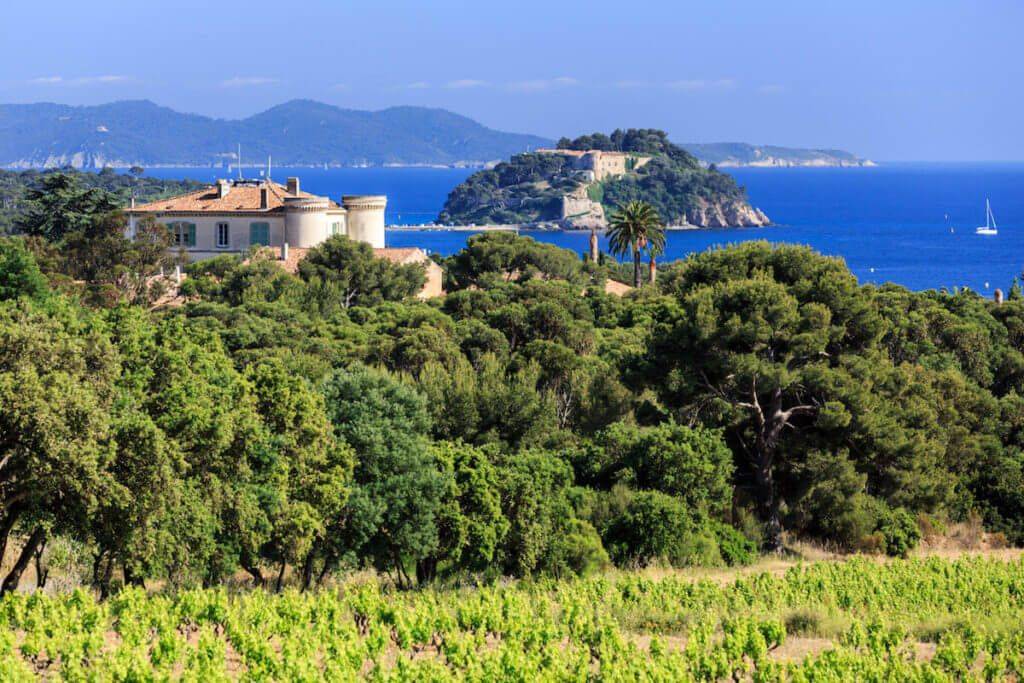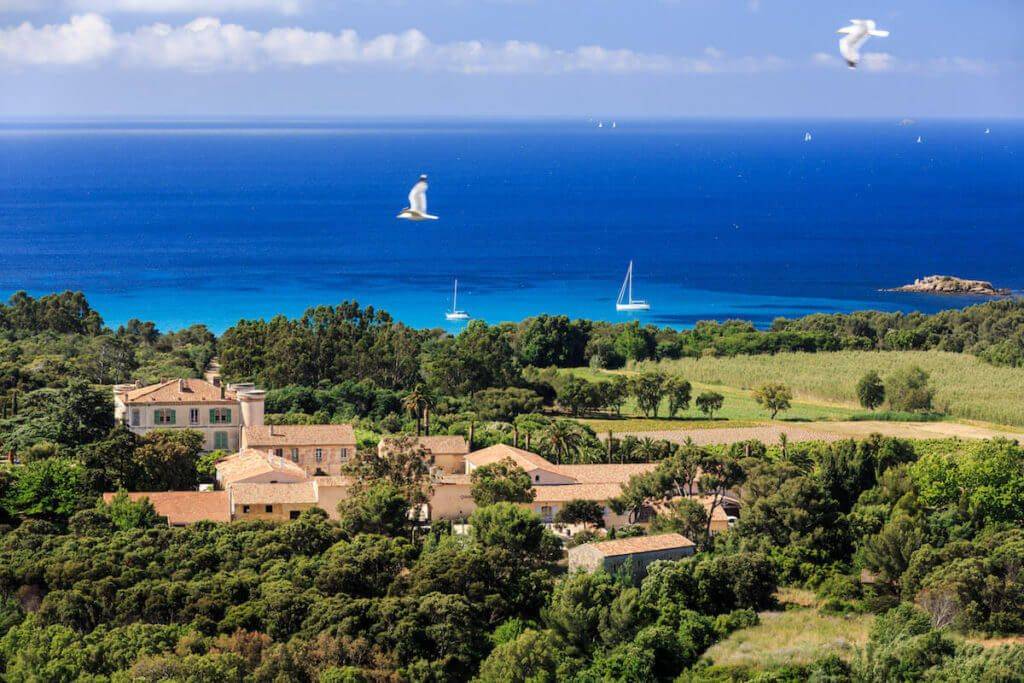by Joshua Orr, Advanced Sommelier
Hustle and bustle permeates the Gare de Lyon, a train station in Paris. The combination of noises, sights and smells – the constant tapping of the changing tiles on the train schedule board, the aroma of fresh baked bread, the colorful displays of fresh flowers, the ever-turning gears of the French train system – is exhilarating. As you board a TGV destined for Provence, you may not realize that the journey you are about to take will be a master class in terroir and an assault on your senses. It is part of what makes France so special in terms of wine production.
You will embark on a journey through many great examples of French terroir, and once you get close to Avignon and are deep in the southern Rhône, you will see changes in landscape that so typically define all that is Provence. The scrub becomes prevalent in between vineyards or fields of lavender. The warmth of the surroundings gives everything a sense of clarity that doesn’t seem to be found elsewhere. As you pass through Marseille and follow the path of the Mistral east toward Nice, life, and even the TGV, appears to slow down. Provence is a magical place and, befittingly, home to the world’s finest Rosés – to which all others are compared and of which you can’t help but sip and smile.

Provence is home to three major wine regions in terms of Rosé production. The Côtes de Provence AOP is the largest as well as the oldest. It’s also where the lion’s share of Rosé produced originates. The Côtes de Provence has four terroir designations that each bring their own distinct terroirs: Frejus on the east coast, La Lond on the southern coast, Pierrefeu immediately north, and Sainte-Victoire in the west, which is the only truly inland terroir designation.
Coteaux d’Aix-en-Provence extends out west and north from the eponymous city. This region is the wester most of the three and extends from the western edges of the Rhône Valley to Sainte-Victoire.
Finally, there is the Coteaux Varois en Provence, the youngest and most continental region in terms of climate. It experiences the harshest of conditions of the three and produces some of the most intense Rosés in terms of color and flavor as a result. The regions are blessed with terroirs that provide natural disease and pest resistance, ample amounts of sunshine for ripening grapes, and myriad soil types.
One of the words most often associated with the region of Provence is “garrigue,” a term describing the local scrub brush and herbs that make up the countryside. When wild herbs, like sage, rosemary, thyme, and lavender, bake in the sun, a certain aroma pervades the air and occasionally makes its way into the wines. Garrigue is a fair descriptor for the often subtle, earthy, warm herbal tones you find in the wines from this area.
Two soil types are found in the greatest proportions throughout the region: limestone and crystalline granite. The term garrigue is typically used in areas where limestone is more prevalent while the term maquis is used in areas where crystalline granite is found. Limestone tends to be more prevalent in western sections of Provence and crystalline granite tends to be found in eastern sections.

The Mistral wind, which originates in Massif Central/Lyon and whips down through the Rhône Valley and across the valleys of Provence, is a very strong cool wind that blows relentlessly for up to weeks at a time. It is both a muse and a mistress for the region and is considered guilty of driving more than a few people completely mad. However, it also provides a dry climate to which fungal diseases and pests cannot prosper. This allows the wine regions to have a very high percentage of organically farmed vines. Around 19 percent of the vines in the region are officially farmed organically, which is considerably higher than the national average of 9 percent.
Provence is rich with diversity in terms of grapes as well as finished wines. There are a large number of grapes planted across the region with the AOPs stipulating for wines to be a blend of at least two grapes. Grenache, Cinsault Syrah, Mourvedre, Tibouren, and Rolle (also known as Vermentino) are some of the more common grapes found in Rosé from Provence. When it comes to the finished wine in your glass, you have several different hues of Rosé, dependent on terroirs, principal grapes, and production methods, to choose from. Rosé from Provence can range in spectrum from a very pale peach color with delicate aromas to a red currant color with richer aromas that are more intense in character. The variation in color is a result of how long the juice was allowed to stay in contact with the grape skins. Therefore, the experience of the winemakers in Provence has a large impact on the final product as they have to know exactly how long to leave specific grapes in contact with the skins in order to achieve their desired color and flavor profile.
Provence has a seemingly endless supply of sunshine, natural resources, and passion for showing it off to the world. Winemaking is nothing new and Provence is the birthplace of wine and France. A thousand years of winemaking experience combined with passion for constantly improving their wines have helped build this region into the flag-bearer of the Rosé style that it is today. The Rosés that are produced in Provence give you a taste of the region no matter where in the world you may be enjoying your glass. It is not only a chance to quench your thirst, but an opportunity to experience the best the world of Rosé has to offer.







